LG 34UM95 Monitor Review
by Chris Heinonen on June 18, 2014 7:00 AM ESTInput Lag is still measured using the Leo Bodnar lag tester at 1080p. The LG supports 1:1 scaling modes as well as aspect and wide. In all these modes I had the exact same results so whatever scaler LG is using for this is very quick. If you run a game at native resolution or scaled you will likely see similar results.
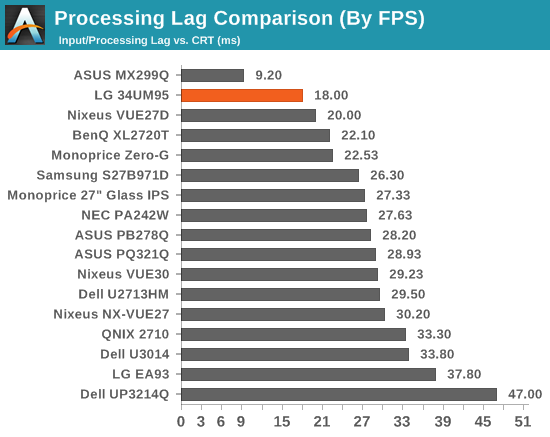
I measure lag at a scant 18ms. For almost all gamers this should be fast enough, and with the extra wide view you’ll potentially see more of the environment when playing games. Of course, this is dependent on the game, and some games will simply crop the top and bottom rather than expanding your field of view.
Gamutvision reports that 73% of the AdobeRGB gamut is covered by the LG 34UM95. This is right by the 99% of sRGB coverage that LG specifies for the display, and what you should expect with White LEDs and an IPS panel.
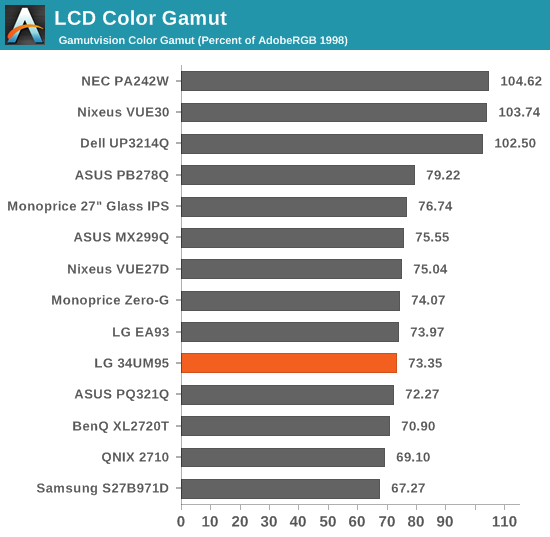
The power draw is comparable to a 27" LCD despite the larger size of the LG monitor. Even with a USB hub and Thunderbolt ports, the power draw is good here considering the size and resolution.
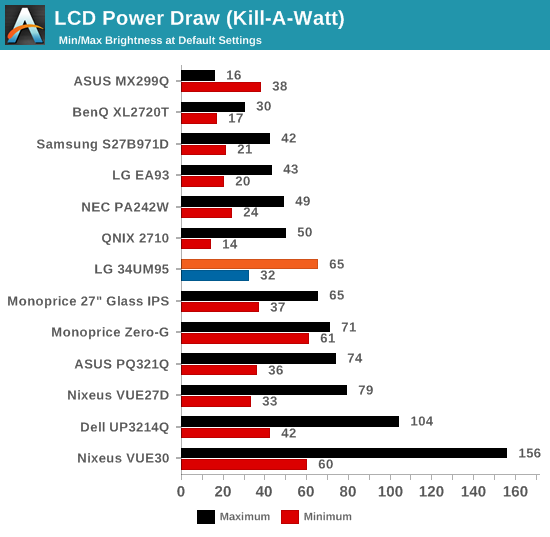
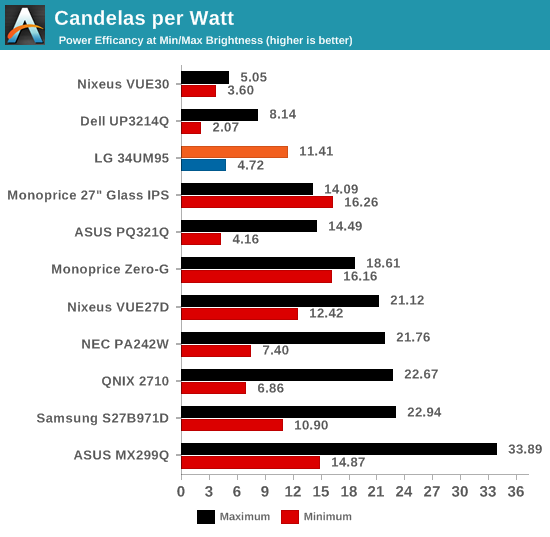


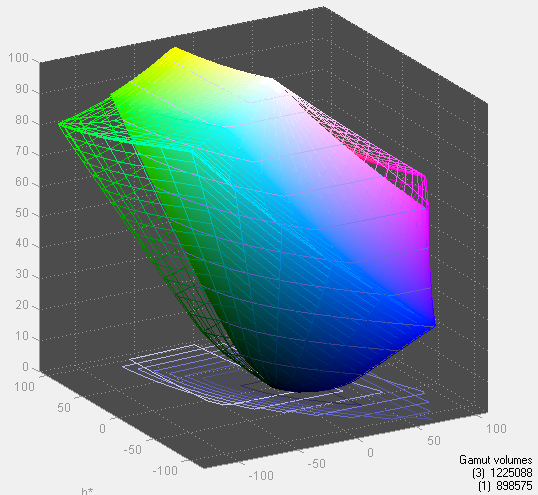








110 Comments
View All Comments
nathanddrews - Wednesday, June 18, 2014 - link
My solution is simply not to scale anything. Every 4K monitor I've tested out so far (including the UP2414Q) has been great at 1:1. From my experience so far, either people are overhyping the scaling issue or they need glasses. I'm not saying that to be a d!ck - I've got glasses and can see everything clearly with them on.twistedgamez - Thursday, June 19, 2014 - link
this 100%, i can understand some people increasing the page zoom setting bit a little on chrome for example, but there is no reason the UI elements, url bar and any other stuff needs to be zoomed - i love my 2880x1800 at nativecheinonen - Thursday, June 19, 2014 - link
I have the 24" NEC EA244UHD here right now, and without scaling enabled it's unusable to me. Text elements are just too small to read from my regular seated distance so I have to use scaling with it. The 32" 4K monitors have been semi-usable without scaling but the 24" ones just are not IMO.fokka - Wednesday, June 18, 2014 - link
5k is just awkward. 4k content will be upscaled and future 8k will be very much downscaled.same with this model, just with 1080p and 4k.
if you need such an awkward screen for your workflow, go ahead, but for movies it doesn't seem to be ideal.
acejj26 - Wednesday, June 18, 2014 - link
I'm pretty sure 1720:1440 is more of a 7:6 ratio, not 6:5.Death666Angel - Wednesday, June 18, 2014 - link
1720/1440 = 1.194447/6 = 1.16667
6/5 = 1.2
Pretty sure 1.19 is closer to 1.2 than to 1.17. :)
acejj26 - Wednesday, June 18, 2014 - link
1. Too early for me to post my post...no caffeine yet2. Then this isn't a 21:9 monitor, since if it were, each half of the monitor would be 21:18 (7:6)
3. This is nitpicking to the extreme
JarredWalton - Wednesday, June 18, 2014 - link
I wonder if there's a typo on the specs and it's not really 3440 pixels wide? Technically, 21:9 with a 1440 height should be 3360 pixels wide. It's not like 1440 isn't easily divisible by 9 (it's 160), and 3440 doesn't really have any particular importance. I guess you just get a "free" 80 extra pixels in width (again, assuming it's not an error on the spec sheets).Of course, the 2560x1080 displays aren't 21:9 either. The correct resolution for 21:9 would be 2520x1080, so there customers are "gaining" 40 pixels of width. 2560 as a width at least makes sense, though, as there have been lots of 2560x1600/2560x1440 displays. There ought to be some logical reason for the choice of resolution, so perhaps there's a technical aspect to the displays that makes the slightly odd AR easier/cheaper to manufacture. However, I can't think of what that reason would be, at least not for a 3440 width.
DanNeely - Wednesday, June 18, 2014 - link
I don't know why they fudged the width/aspect ratio slightly either; but Google reports a number of companies launching 3440x1440 monitors but nothing at 3360x1440. Possibly the extra width lets them reuse existing production lines, just cutting at different points, with less wastage.japtor - Wednesday, June 18, 2014 - link
I figure they're sticking with the "21:9" terminology for marketing reasons, like it's easy to compare it to the usual 16:9 screens in that sense.